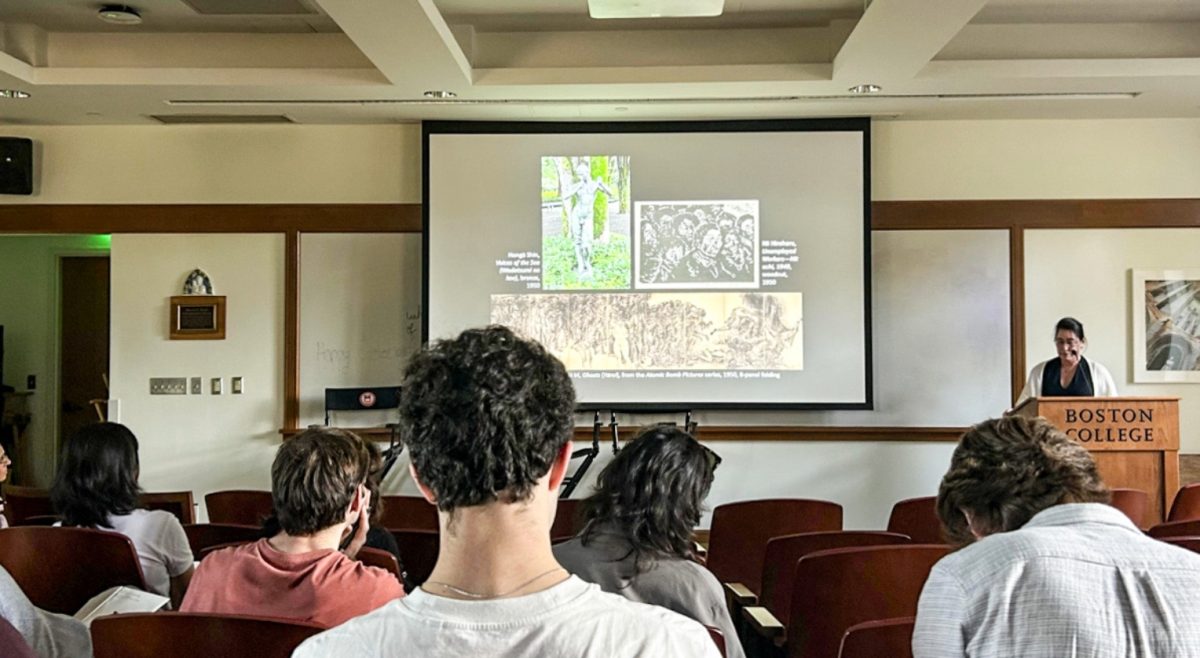You’ve heard of Lance, Neil, and Louis Armstrong—now make room for Mary. In the Atrium of the McMullen Museum of Art, a new exhibit for Mary Amrstrong’s Conditions of Faith lines the walls. The exhibit will be open through December.
As you enter the museum, walk toward the stairs, and begin to go upstairs, you start to notice a collection of vibrant and colorful art as the staircase spirals. This art was created by one of Boston College’s very own: Armstrong was a faculty member from 1989 to 2019 and taught in BC’s art, art history, and film departments. Armstrong has had exhibits across the country and now has a new exhibition in McMullen displaying art from her past seven years of work.
Armstrong’s art decorates each wall of the staircase in the heart of the Museum. The stairwell of McMullen features several windows, and this allows for light to shine through to the art. The light adds a glow to the pieces that changes depending on the sun’s position in the sky. The artwork on display included “Tsunami” (2015-17), “Troubled Waters” (2016-19), “Icarus” (2017), and “On Coming #2” (2013), all of which are oil and wax on panel.
Armstrong’s art features lights pastels, as well as dark browns and grays that show various scenes in nature. Such scenes included a sun setting behind a mountain and an unsettled sea. In addition, the museum had Armstrong’s various sketches and notebooks on display for students to see. The exhibit includes an interactive iPad that allows individuals to “flip” through the pages of her sketchbook and see the preliminary steps to painting.
“Nature and memory inspire her layered, complex compositions. Oil and wax depict forces of nature, both imagined, and real, in the landscape,” according to McMullen’s description of the exhibit.
The art that lines the walls consists of uniform bold brush strokes and intense colors, yet different scenes. Armstrong used a unique method to produce her art. Some pieces look as though someone had taken a metal scraping tool and edged various bright colors into the canvas. Others incorporate dragged paint that convey drifting clouds and turbulent water. The scrapes and pulls through the painting peel back one color, only to reveal another.
McMullen’s inclusion of Armstrong’s art alongside other exhibits provides a contrast between different approaches to the same scene. As you reach the second level of McMullen, William Trost Richards: Hieroglyphics of Landscape is on display across from Armstrong’s art. Richard’s art, in comparison to Armstrong’s, takes a more realistic and classical approach for scenes of forests and mountains and reflected the style of the last 19th century. It provides a juxtaposition between the two forms that demonstrates the strengths both styles have in presenting the same scene.
Armstrong told McMullen that her art was meant to provide “a perfect visual metaphor for change, both desired and feared, destructive and regenerative, personal and political.”













